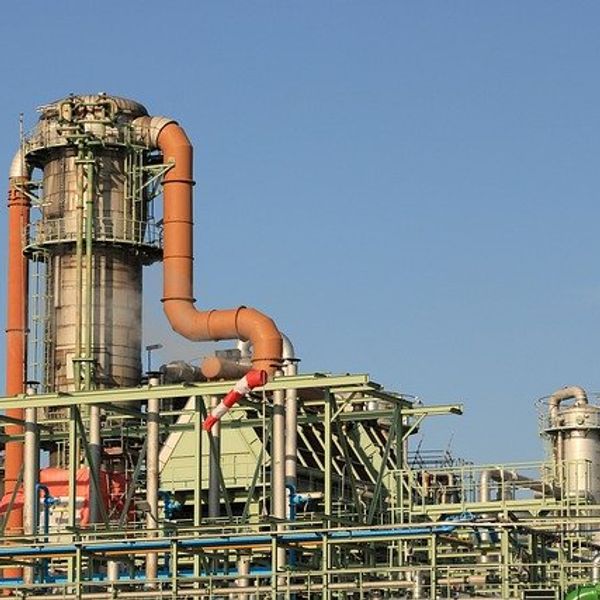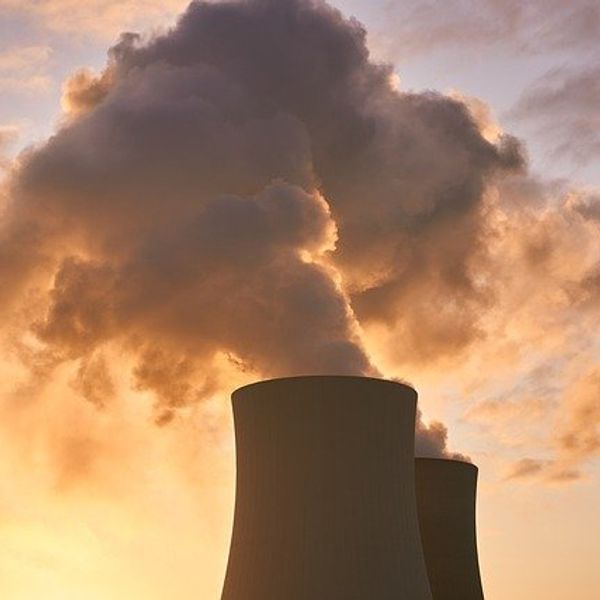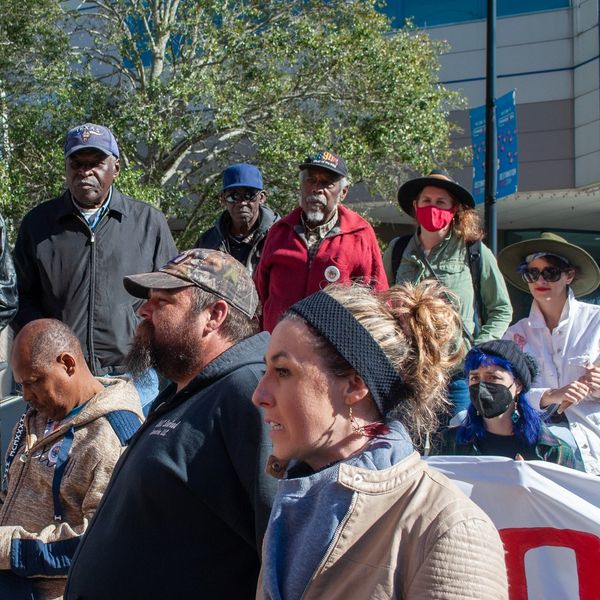"The top environmental problems are selfishness, greed, and apathy. To deal with these we need a cultural and spiritual transformation. And we scientists don't know how to do that." – Gus Speth
Picture this – a beautiful river in a valley just beyond the base of a sprawling cliff. You'd expect there to be natural parks, children playing, and wild animals contributing to a balanced ecosystem.
This essay is part of "Agents of Change" — see the full series
Instead, the Kern River Valley, located in my hometown of Bakersfield, California, is surrounded by a vast field of oil and natural gas extraction sites and cluttered with hundreds of oil rigs.
My training in environmental health sciences has helped me to quantify and document the harmful health effects of widespread environmental chemical pollution. Because of my education, I have mixed emotions when I think about my hometown as well as many others like it that rely on polluting industries linked to the fossil fuel economy.
This essay is also available in Spanish
On one hand, I share the pride of community members who see these industries as a source of jobs, economic growth, and purpose. On the other hand, I am deeply concerned about negative externalities – the environmental and health impacts that innocent residents bear as a result of pollution produced by fossil fuel industries.
What is the responsibility of government and private corporations when operations of the energy sector are linked to environmental contamination that results in long-term health impacts within communities? I have often asked myself this question when I reflect about my Kern County community.
In order to ensure healthy communities while supporting the energy demands in the U.S., we need to consider necessary actions such as payment for the cost of negative externalities, community input on environmental projects, and investment in clean energy.
High risks of extraction
There is a deeply concerning and familiar story that repeats itself in the U.S. Borne out of a combination of reduced government regulations, optimization of profit through business practices, and lack of rigorous health and environmental impact assessments, a corporation's operations can result in catastrophic, and sometimes irreversible disasters that may affect a community for generations through negative externalities such as air pollution, groundwater contamination, and property value reduction resulting from these high-risk actions.
When this occurs, a settlement may be negotiated, however, it is oftentimes tragically insufficient to compensate the community for their loss of health and quality of life. Importantly, communities that are affected the most by these impacts are less privileged, further perpetuating environmental injustice.
There are numerous operations in natural resource extraction occurring in the U.S. that affect the health of local communities. For example, there are more than 275,000 hydraulic fracturing sites scattered across counties within 21 states. And the number of hydraulically fractured wells is growing.
The Environmental Protection Agency estimated that approximately 20,000 new hydraulic fracturing sites were developed in the U.S. in 2015 alone. Communities with hydraulic fracturing sites are at risk for groundwater contamination of chemicals with toxic effects on various organ systems, including the liver, nervous system, and kidneys. Although several lawsuits have been filed as a result of contamination due to hydraulic fracturing, the settlements are reactionary and insufficient.
Residents will bear high costs in healthcare services for treatment of health conditions resulting from contamination. Public agencies and municipalities extend already strained resources to monitor and mitigate environmental contamination. And representation in litigation is often privileged to those with social and political capital. This is not economically or environmentally sustainable.
Transport troubles

Standing Rock Sioux and others protest the Dakota Access Pipeline in 2016. (Credit: Joe Brusky/flickr)
Community concerns and impacts do not end after oil or gas is pulled out of the ground. There is also an urgent need to address the negative externalities caused by the transportation operations of the fossil fuel economy.
In 2014, the Dakota Access Pipeline was proposed to transport crude oil across four states in the U.S. and posed serious hazards to the environment and human health. The proposed pathway of construction overlapped with reservation lands that belong to the Standing Rock Sioux Tribe. Furthermore, the Standing Rock Sioux Tribe expressed concern over the impact of this project on cultural resources within their land.
Proactively, the Tribe and its allies drove a grassroots movement of protests to protect their sacred land. Earthjustice – a non-profit environmental law organization – partnered with the Standing Rock Sioux Tribe in a lawsuit against the U.S. Army Corps of Engineers, the office tasked with approving the implementation of the pipeline. The legal charge of this lawsuit was that the environmental assessment and construction of the pipeline violated the guidelines set in place by the Clean Water Act.
Meanwhile, the development of the Keystone XL pipeline is in progress as the Trump Administration signed executive orders and reversed several federal regulations, including the scope of the Clean Water Act. This pipeline is projected to transport more than 800,000 barrels of crude oil per day across six U.S. states, from Alberta, Canada to refineries in Texas.
Existing infrastructure of the Keystone Pipeline as well as the Dakota Access Pipeline have both resulted in oil spills, and the reduction in regulation for clean water enhances the threats for long-term well being of the affected communities.
Although these existing spills occurred in areas that aren't directly impacting residents, they contaminated the soil and groundwater systems, which impacted local wildlife and required remediation. These spills demonstrate the risk of future spills that could occur more proximal to communities.
We can’t afford to wait
Community members suffer the health consequences of corporations' actions on their natural environment.
In order to ensure healthy communities like my hometown in Kern County, while balancing their economic prosperity and meeting U.S. energy demands, the path forward requires three critical steps: (1) leveraging science to estimate negative externalities and advancing policies to hold corporations accountable for the costs associated with environmental contamination; (2) incorporating community stakeholder input and human rights into the development of contracts for any project causing negative externalities; and (3) bolstering sustainable and clean energy systems through legislation, private-public partnerships, and grassroots action.
We can't afford to wait for major environmental disasters to act. Science leaders, corporate executives, and politicians need to listen to community members in order to ensure environmental health and justice.


























